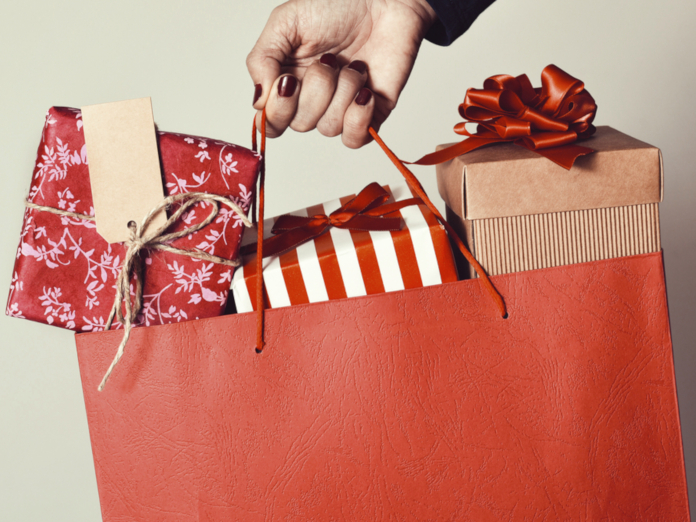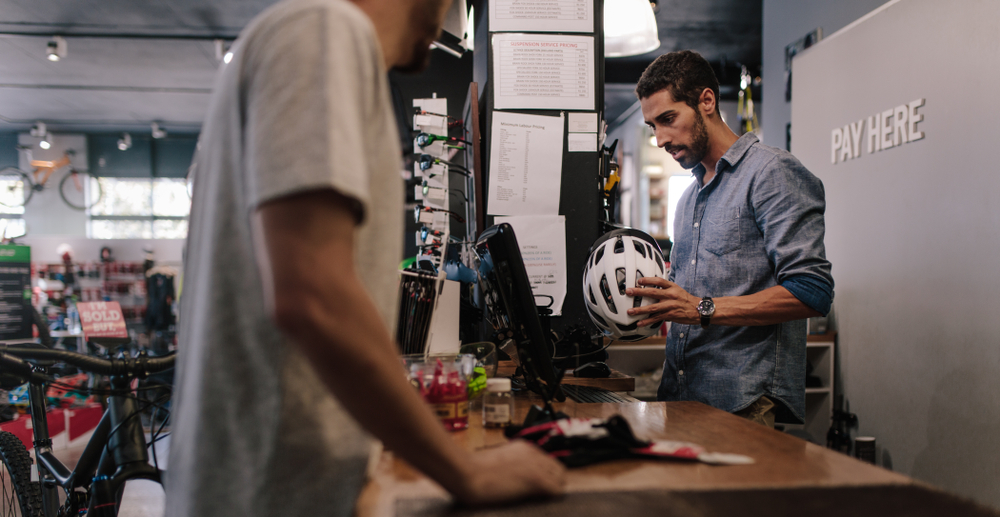Upselling and cross-selling are strategies employed by retailers to sell extra products to their customers. By incentivising customers to spend more than they may have intended to spend, the retailer achieves an increase in transaction value.
But what’s the difference between cross-selling and upselling?
Upselling is when a customer comes in for a light bulb and you sell them a pack of three by pointing out that it’s a good idea to have spares. Or selling them a more expensive bulb by highlighting its virtues such as superior performance, energy efficiency or extended life span.
Cross-selling is when a customer comes in for a lamp and you sell them a light bulb by pointing out that the lamp needs a light bulb.
So upselling is using marketing techniques to increase transaction value on a single type of product, whereas cross-selling increases transaction value by introducing a complementary product.
Beyond French fries…
When most people think about their experience of upselling, they recall that immortal line: “Do you want fries with that?” although, as we’ve seen, that’s actually “cross-selling” rather than “upselling”. It’s also worth noting that over a quarter of those surveyed by Solopress disapproved of unhealthy add-ons – more on that later!
But what lies beyond the fries? What other ways are there to be genuinely helpful to customers while driving transaction values? And what do audiences really feel about the whole thing anyway?
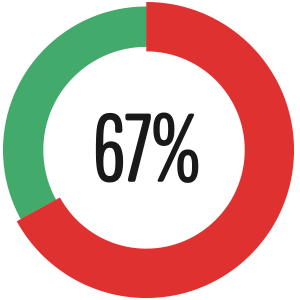 67% of shoppers confirmed that they had taken advantage of an add-on item offered to them at the till*, so it’s an activity where you can be pretty confident of a strong take-up. And with added traffic over Christmas, now could be the ideal time to give it a try. Here are some ways of implementing an upselling or cross-selling deal – plus 7 golden rules on how to do it well.
67% of shoppers confirmed that they had taken advantage of an add-on item offered to them at the till*, so it’s an activity where you can be pretty confident of a strong take-up. And with added traffic over Christmas, now could be the ideal time to give it a try. Here are some ways of implementing an upselling or cross-selling deal – plus 7 golden rules on how to do it well.
7 Methods & mechanics for cross-selling & upselling
There are various different approaches to cross-selling and upselling that can be applied via different channels and at different stages of the customer journey. Some of the most popular are:
1. Cross-selling complementary goods
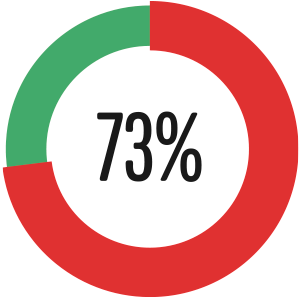 Complementary goods, otherwise known as companion products or add-on items, are associated products that you can encourage customers to add to their basket, either with a discount, or simply reminding customers about them through POS. 73% of people we surveyed are happy to be reminded of companion products (such as batteries for toys)*.
Complementary goods, otherwise known as companion products or add-on items, are associated products that you can encourage customers to add to their basket, either with a discount, or simply reminding customers about them through POS. 73% of people we surveyed are happy to be reminded of companion products (such as batteries for toys)*.
2. Add-ons at the till
That’s where you’re offered an additional product at the point of purchase – like that 200g chocolate bar at the petrol station. Sometimes a minimum spend is required to qualify for a reduced price on the add-on item, but not necessarily. This mechanic is particularly useful for stocking filler items at Christmas time. For example, if you’re buying a nice hardback as a Christmas gift and the bookshop is offering a Where’s Wally book for £1 when you spend £10, that can make a nice present for a younger relation.
3. Basket spends
An example of a basket spend deal might be “Get the new FIFA game for £30 when you spend £50 on other products.” This is a reduction based on total transaction value, like some add-on items, except here it’s the add-on item that’s the hero rather than the afterthought. FIFA might be the item that your customer left the house to buy, but they take the opportunity to fill their basket with other gifts because of your basket spend deal.
4. Bundle deals
Starter kits are a good example of bundle deals – everything you need to get started in one bundle that’s cheaper than purchasing the items individually. Typically, a bundle might include a hero item plus accessories; maybe a carry case, a cleaning kit, charger or whatever complementary products are appropriate.
5. Bulk buy
A tested upselling technique, offering bulk savings can take a number of forms including discounted multiples, BOGOF (buy one get one free) or BOGOHP (buy one get one half price) deals. Be wary of these types of deals around Christmas gift products – gifters are most likely to be buying just one unit. For food & drink items though, Christmas shoppers might welcome the opportunity to save on larger quantities.
6. Automated product recommendations
Online sellers have the luxury of using algorithms that look at what a customer has added to basket and recommending multiple deals or complementary goods before they check out. It doesn’t end at the checkout either. As you gather information over the lifetime of a customer’s relationship with your brand, you can tailor emails to put a targeted sales message in front of specific audience segments.
7. Services as add-ons
Express dispatch or next day delivery can be a good way to increase the value of a transaction – especially if you can generate margin from these services. You can use gift wrapping as an extra revenue stream at Christmas, but retailers might consider a complimentary service. 46% of shoppers felt that a free wrapping service would make them more likely to purchase from a retailer.
7 Golden rules for upselling and cross-selling at Christmas
Upselling and cross-selling are worthwhile strategies if you’re looking to boost transaction value, but there are certain caveats to abide by if you want to avoid failed campaigns and irritated customers. Here are our 7 golden rules:
1. Be realistic
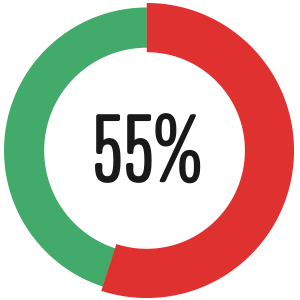
It’s hard to cross-sell an item that commands a higher price point than the original purchase. For example, if you sell a bike, you can cross-sell a helmet. If you sell a helmet it will be tough trying to cross-sell the bike. 55% of shoppers are put off when the add-on item is higher value than the original purchase*.
2. Stay wholesome

Be wary of offering any add-on items that are perceived as unwholesome. Confectionery at supermarket tills has long been the subject of controversy, along with that famous example of French fries! 26% of those we surveyed are put off when an add-on item is not health aware*.
3. Maintain quality
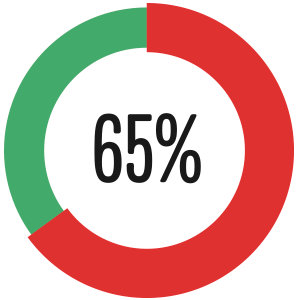 65% of those surveyed are put off when the add-on item is low quality*. No one wants tat in their homes, so you’d be unlikely to see significant uptake on an item that’s cheap and nasty. With growing awareness of the threat of plastics to the environment, giving plastic items away cheaply may also count against your brand in the eyes of the customer.
65% of those surveyed are put off when the add-on item is low quality*. No one wants tat in their homes, so you’d be unlikely to see significant uptake on an item that’s cheap and nasty. With growing awareness of the threat of plastics to the environment, giving plastic items away cheaply may also count against your brand in the eyes of the customer.
4. Stay relevant
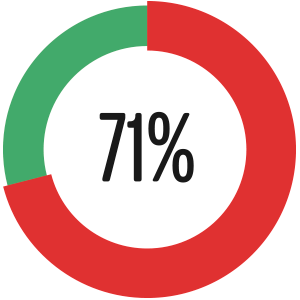 71% of shoppers in our survey are put off when the add-on item is unrelated to the core purchase*. If the add on item is clearly aimed at a very different demographic, the purchaser may even feel excluded by the offer. This can be overcome by offering a range of items for shoppers to choose from, ensuring there’s something for everyone.
71% of shoppers in our survey are put off when the add-on item is unrelated to the core purchase*. If the add on item is clearly aimed at a very different demographic, the purchaser may even feel excluded by the offer. This can be overcome by offering a range of items for shoppers to choose from, ensuring there’s something for everyone.
5. Don’t waste our time!
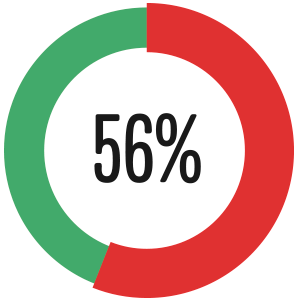 56% of shoppers are put off when the upselling/cross-selling process delays the transaction*. This stands to reason, especially over Christmas when customers have a lot of shopping to get through. If you’ve prepared a lengthy script for colleagues on the tills to recite, this might not go down too well with stressed shoppers. For best results, keep it brief.
56% of shoppers are put off when the upselling/cross-selling process delays the transaction*. This stands to reason, especially over Christmas when customers have a lot of shopping to get through. If you’ve prepared a lengthy script for colleagues on the tills to recite, this might not go down too well with stressed shoppers. For best results, keep it brief.
6. Protect your margins
If you’re sacrificing percentage on your margin by offering a discount, that needs to be offset by increased transaction value bringing in a greater overall revenue. It might be that you’re willing to sacrifice margin to achieve other marketing goals such as locking in customers or combatting competitors. That’s fine as long as you’ve calculated your exposure and determined it to be worthwhile in pursuit of greater gains in the long term.
7. Shout about it!
Make sure you advertise your cross-selling or upselling deal. Even if you’re using well-briefed and incentivised till staff to push your offer, you’ll still want additional marketing activity to spread the word. Use point-of-sale materials in store: at the till, on posters, on shelf edges and in the windows. Above-the-line advertising and online support, all with a consistent look and feel, will help get the message out your audience.
Hopefully, this has opened your eyes to the opportunities for upselling and cross-selling at Christmas – and given you some tips on how to do it effectively. If you want to explore how point-of-sale materials such as posters, table talkers and signage can help you to promote your deal, visit us at www.solopress.com or give us a call on 01702 460047.
*All data was gathered as part of the Solopress 2019 Christmas Survey. All statistics shown are based on the responses of 100% of the 1204 respondents. Percentages are rounded up or down to the nearest percentage point. Data gathered through the survey remains the property of AGA Print Ltd trading as Solopress Ltd and may not be reproduced without acknowledgement via back link. All copyright and other intellectual property rights are reserved.

